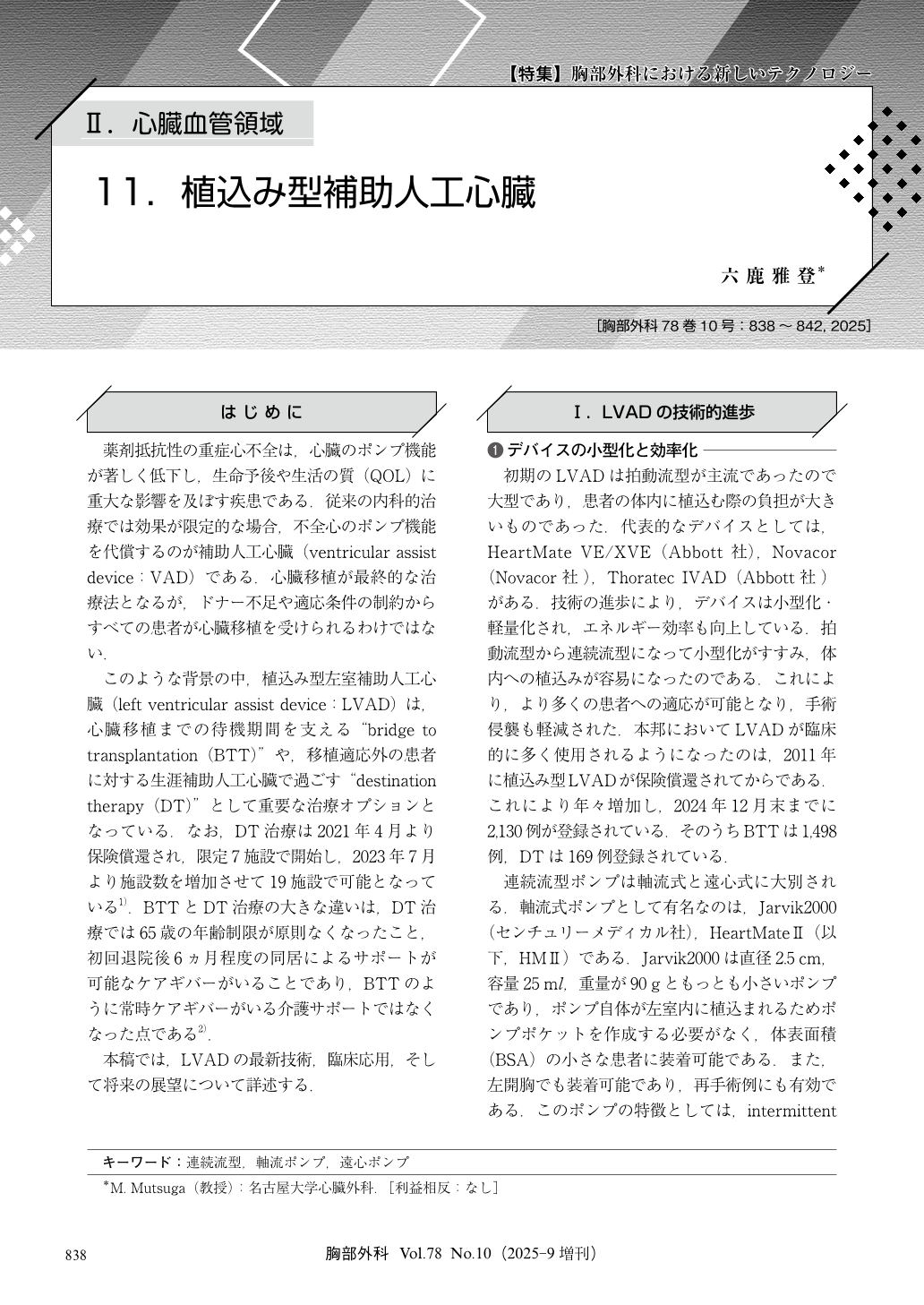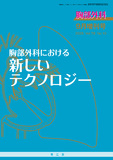Japanese
English
- 有料閲覧
- Abstract 文献概要
- 1ページ目 Look Inside
- 参考文献 Reference
薬剤抵抗性の重症心不全は,心臓のポンプ機能が著しく低下し,生命予後や生活の質(QOL)に重大な影響を及ぼす疾患である.従来の内科的治療では効果が限定的な場合,不全心のポンプ機能を代償するのが補助人工心臓(ventricular assist device:VAD)である.心臓移植が最終的な治療法となるが,ドナー不足や適応条件の制約からすべての患者が心臓移植を受けられるわけではない.
Drug-resistant severe heart failure significantly impairs cardiac pump function, affecting both prognosis and quality of life (QOL). When conventional treatments are ineffective, a ventricular assist device (VAD) can support heart function. Heart transplantation remains the ultimate treatment, but donor shortages and eligibility constraints limit access. The left ventricular assist device (LVAD) is a crucial option, serving as a bridge to transplantation (BTT) or a permanent destination therapy (DT) for ineligible patients. In Japan, DT was covered by insurance in 2021, expanding from 7 to 19 facilities by 2023. Key differences between BTT and DT include the removal of the age limit (65 years) and reduced caregiver requirements. LVAD technology has advanced, with miniaturization improving implantation feasibility and reducing surgical burden. Pump designs have evolved from pulsatile to continuous-flow types, with axial and centrifugal models enhancing efficiency. Innovations in biocompatibility and wireless power transmission aim to reduce complications and improve long-term outcomes. BiVACOR, a fully implantable total artificial heart using magnetic levitation, was first clinically tested in 2024. While currently limited to temporary use before transplantation, further advancements may lead to broader applications, enhancing patient survival and QOL.

© Nankodo Co., Ltd., 2025


